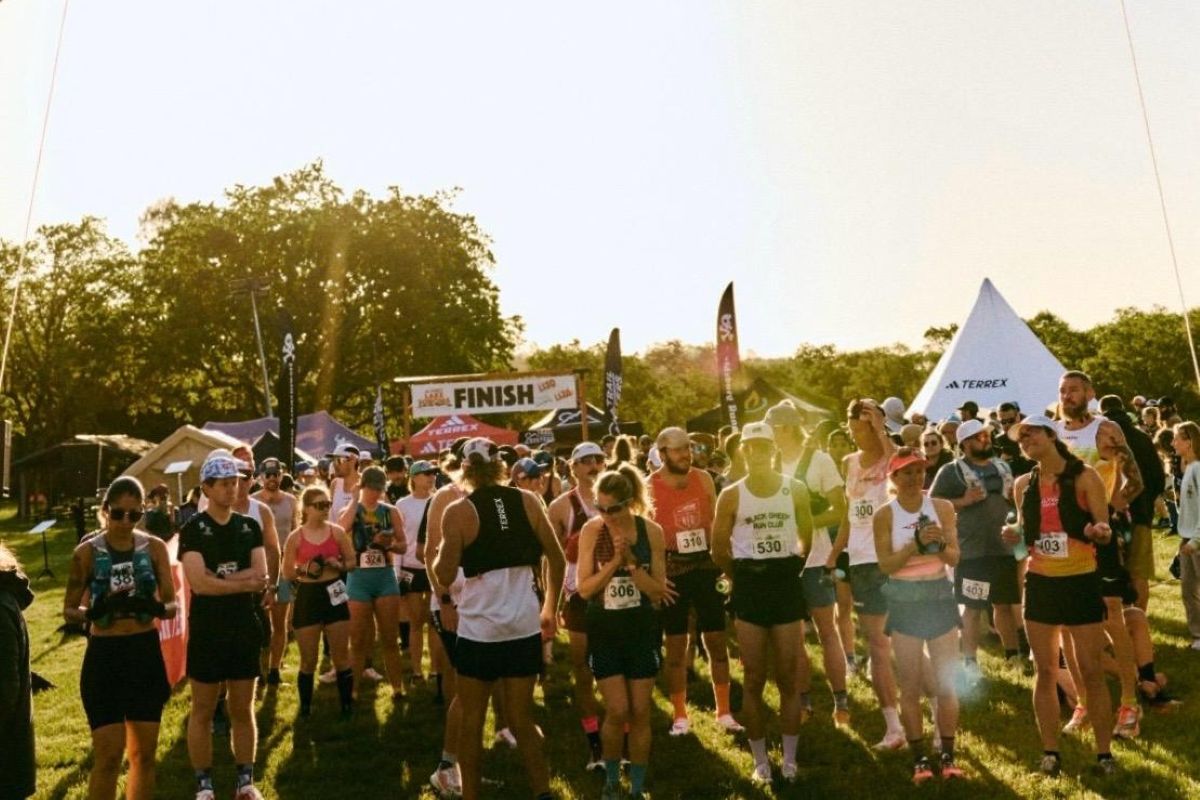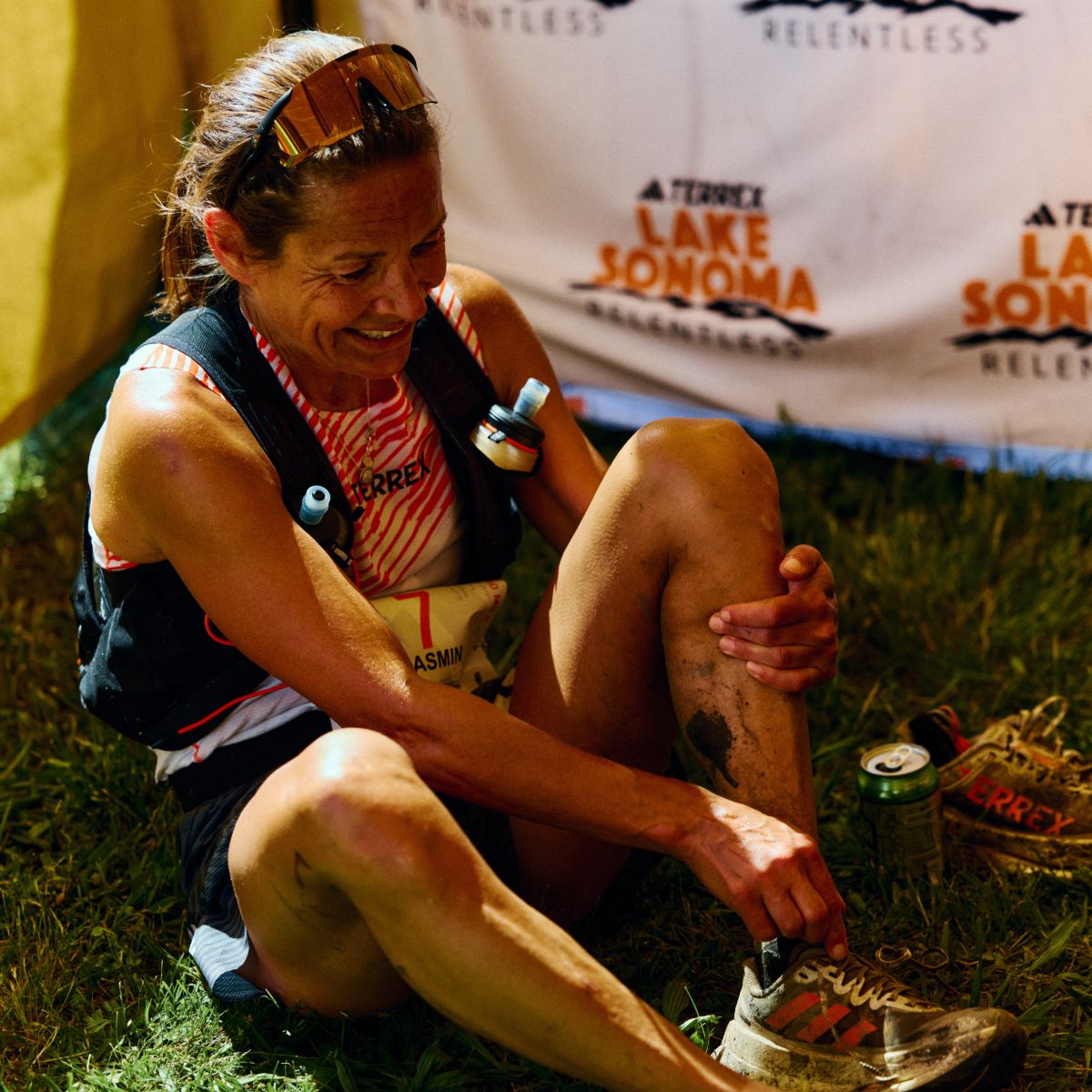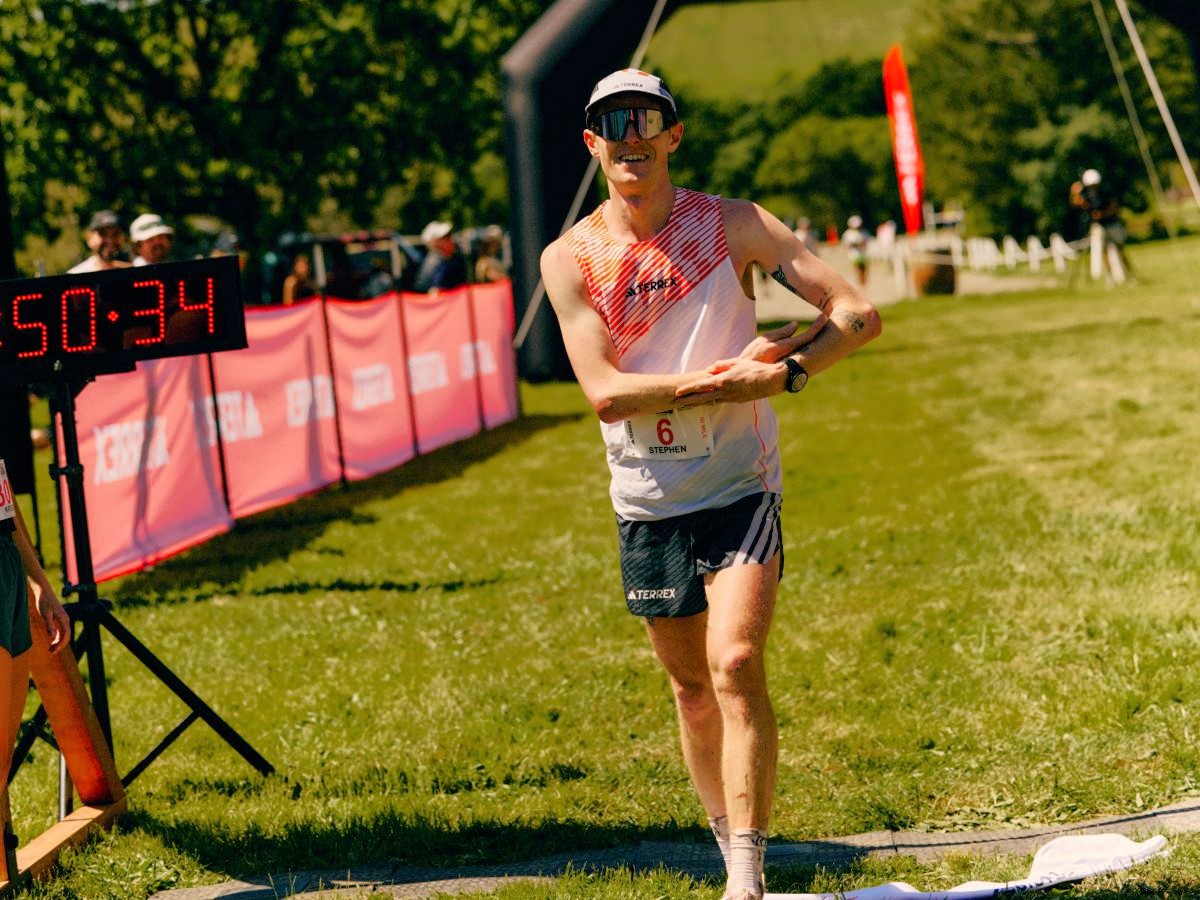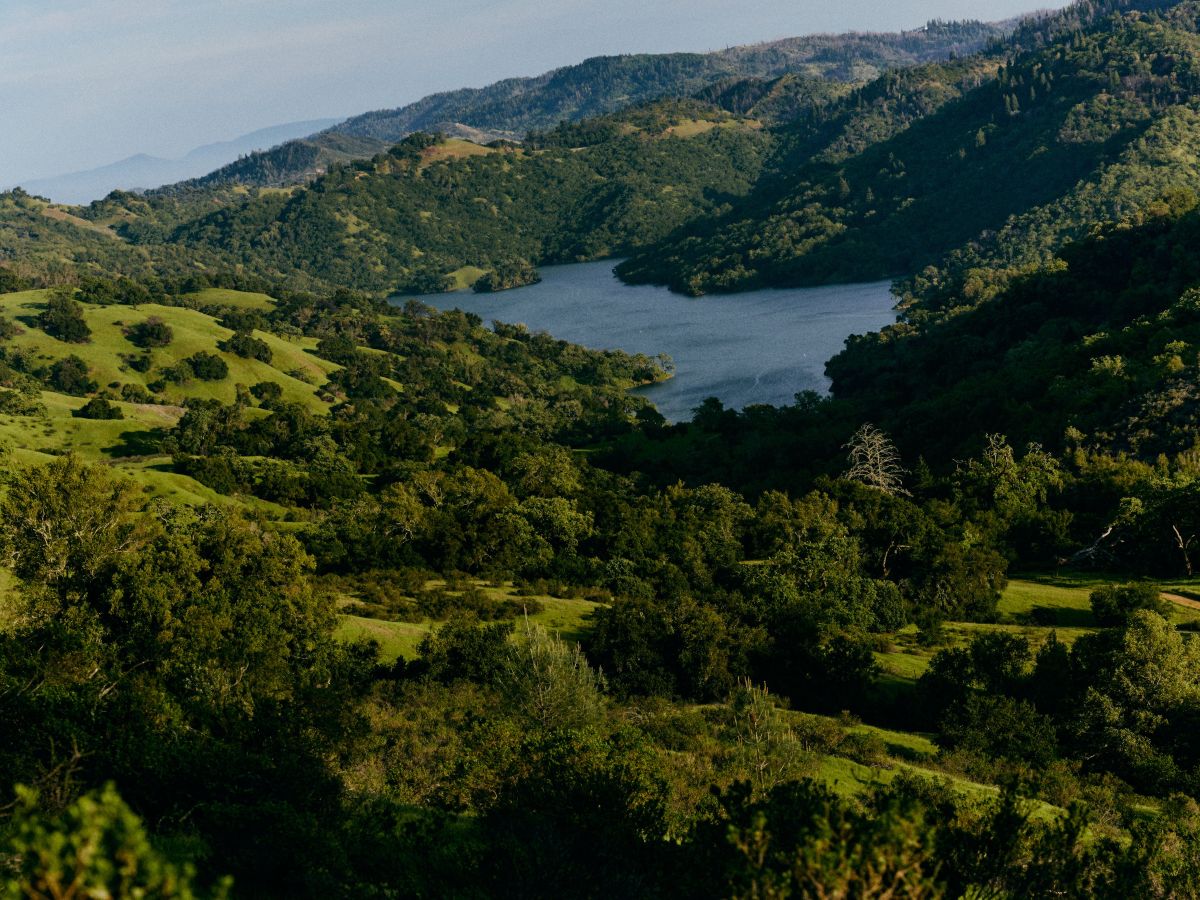On April 12, runners lined up at the start of the 2025 Lake Sonoma 50 Mile, a gorgeous trail run in the hills of California. With over 9,000 feet of climbing over the 50 miles, warm weather, and runnable terrain, the race is a great first big event of the year. For that reason, many professional athletes used it as a warm-up event for a big season.
In this article, winners of the race, Tara Dower and Stephen Kersh, as well as third-place Chris Myers and seventh-place Jasmin Nunige discussed how they prepared for the early season race, and what they will take from the event as the rest of their season unfolds.
Training Through the Winter
Living in the Northern Hemisphere, training in the winter months is full of obstacles. Short, dark days with colder temperatures and inclement weather can be an obstacle. However, it could also be the perfect training tool for resilience. Says Myers, “I just call it character building. Running in the slush and snow doesn’t physically benefit you because you could always hop on a treadmill and get more quality training. But I think you know the benefit of varied terrain, and also mental fortitude can help you in an ultra.” He goes on to explain that he fell back on that mental toughness when experiencing cramps and falling from first place during the Lake Sonoma 50 Mile.
Along with embracing the harsh conditions, winter is a time when lots of runners also lean into cross training. Nunige, a former Olympic Nordic skier, explains, “In the winter, I had a varied training program. The focus was on building strength, combined with running, cross-country skiing, and some indoor cycling. Variety is important to me. Cross training also allows the body to regenerate, especially the structural musculoskeletal system, despite a good training volume.” Finding another way to grow in strength and endurance over the winter can prevent overuse injuries as well.
For Dower, this winter was a time to rebuild muscle and get strong. With guidance from her coach, Megan Roche, she rebuilt her base after a year of racing and fastest known time efforts. Dower adds, “I also started working with a strength coach and physical therapist, which is new this season. He’s been helping with mobility, increasing strength, and any injuries that I might have.” Taking an off-season to focus on strength, like Dower, can help any runner unlock some additional power.
Kersh also worked on strength, but in the mental sense. He states, “To me, it also comes down to the mental side of things. If I’m excited for a goal or a race, I will get in the required training to get me to the starting line feeling ready. That might mean training through some pretty terrible winter and early spring conditions, and if the mind isn’t excited for the goal, then things do tend to unravel.”
Taking time to reevaluate goals and define the reason for racing can help when training gets tough later in the season.
Getting Into the Racing Mindset
It can be hard to get into the best mindset early in the season, when ambition is high, but the body is still rebuilding. Taking advantage of an early season race to find what works is a great start to feel strong and prepared as later races start rolling in.
In the weeks leading up to the Lake Sonoma 50 Mile, Nunige was experiencing symptoms related to her Multiple Sclerosis diagnosis, which she has managed for years along with high level racing, taking away some of her enthusiasm to train and compete. However, things changed once she was around her teammates. She explains, “The days before the race, which I spent in Sonoma, California, with teammates, also motivated me enormously, and I felt my body responding positively to the training sessions. They gave me a huge boost and a great desire to race.”
Finding a team, training buddy, or community as Nunige did can help keep inspiration and motivation high as the race draws near.
For Kersh, getting into the racing mindset was more internal. “For me, racing is all about finding out what you’re capable of on the day. I get into the mindset by getting excited about the opportunity to find that out. After months of dedicated work, it’s time to cash it all in and go big on the day.”
Every season brings different abilities and strengths, using a race as a benchmark can be helpful in moving forward in training.
Myers recommends practicing race nutrition ahead of time. “Don’t skimp on nutrition, especially in training, because you really do have to train your gut. Unfortunately it’s really expensive, but you can’t just expect to save all your nice race fuel for race day, and then just expect it all to work.”
Preparing for Summer Conditions
It is also important to note that the first major early season race could be warmer than what an athlete has been training for. For this reason, it is essential to begin preparing the body. Dower, who also raced the 2025 Black Canyon 100k in February, found changing her surroundings to be beneficial. “I was in Durango, Colorado, for the last three months of training, but then there were times I would head down to Sand Canyon, or in between the Flagstaff and Phoenix, Arizona, area to get a little warm and desert-specific running.”
Myers, who is located in Nederland, Colorado, utilized heat training. “I used a sauna or hot tub to help acclimate myself to the heat.” He adds that it is essential to do this during taper or down weeks, because heat acclimation in training can add too much stress to the body. Myers also suggests getting a sweat test to better evaluate nutritional and salt needs.
Learning Lessons
For many, the first couple of races early in the season can be a time to learn lessons and reevaluate training. Both Dower and Myers ran the Lake Sonoma 50 Mile in preparation for the Western States 100 and used the course to better dial in their next couple months of training.
For Dower, this will be a time to focus on her mental strength, an area which she wants to improve on. She explains, “Oftentimes, I find myself getting down on myself for a pace, and I finished the race, and I realized like the pace was good, and for the field it was a good pace. Honestly, I think physically, I’m in the best shape of my life, but mentality is the thing I can work on.”
Emotional intelligence and positive thought are both linked to improved performance, making them important for any athlete to focus on.
For Myers, the next training block will be about getting course specific. “There will be a lot of heat training. Also, lots of volume and good course-simulation runs, meaning a lot of downhill.” Myers plans to not only crew at the Canyons by UTMB 100k, which uses much of the Western States 100 course, where he will get in some training, but to also do the Western States 100 training camp on the U.S. Memorial Day weekend to train on the course with other racers.
While it might not always be possible to train on the exact course, running something similar can help prepare the body and mind.
While top athletes may have more time and resources to dedicate to their training, the obstacles and lessons presented in early season racing can be experienced by any athlete training toward a goal. Taking time to build a base in the winter and spring, including strength, cross training, nutrition, and mental fortitude can pay dividends when it comes to an early season race.
Call for Comments
Do you use early season races as training for your big goals?




